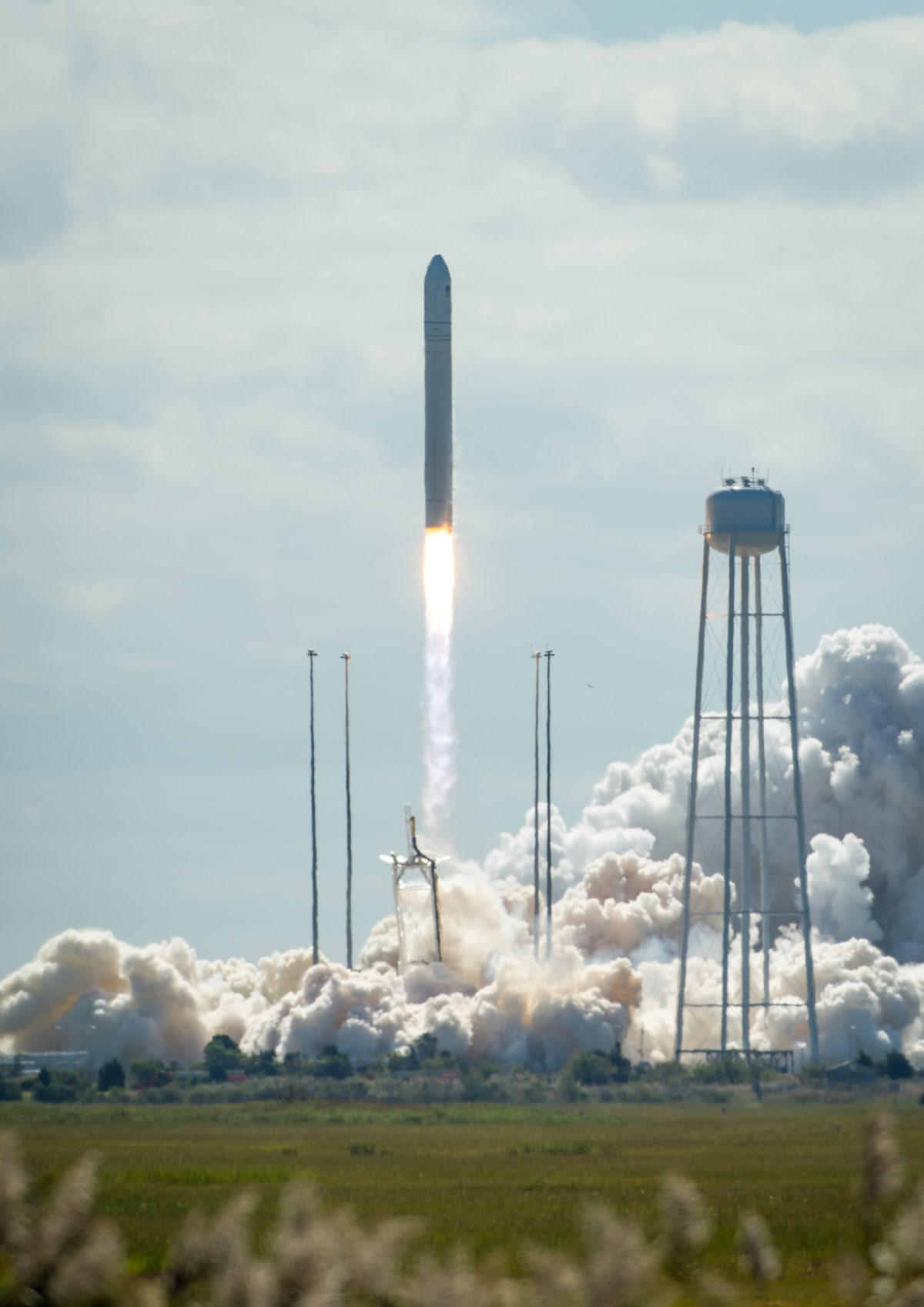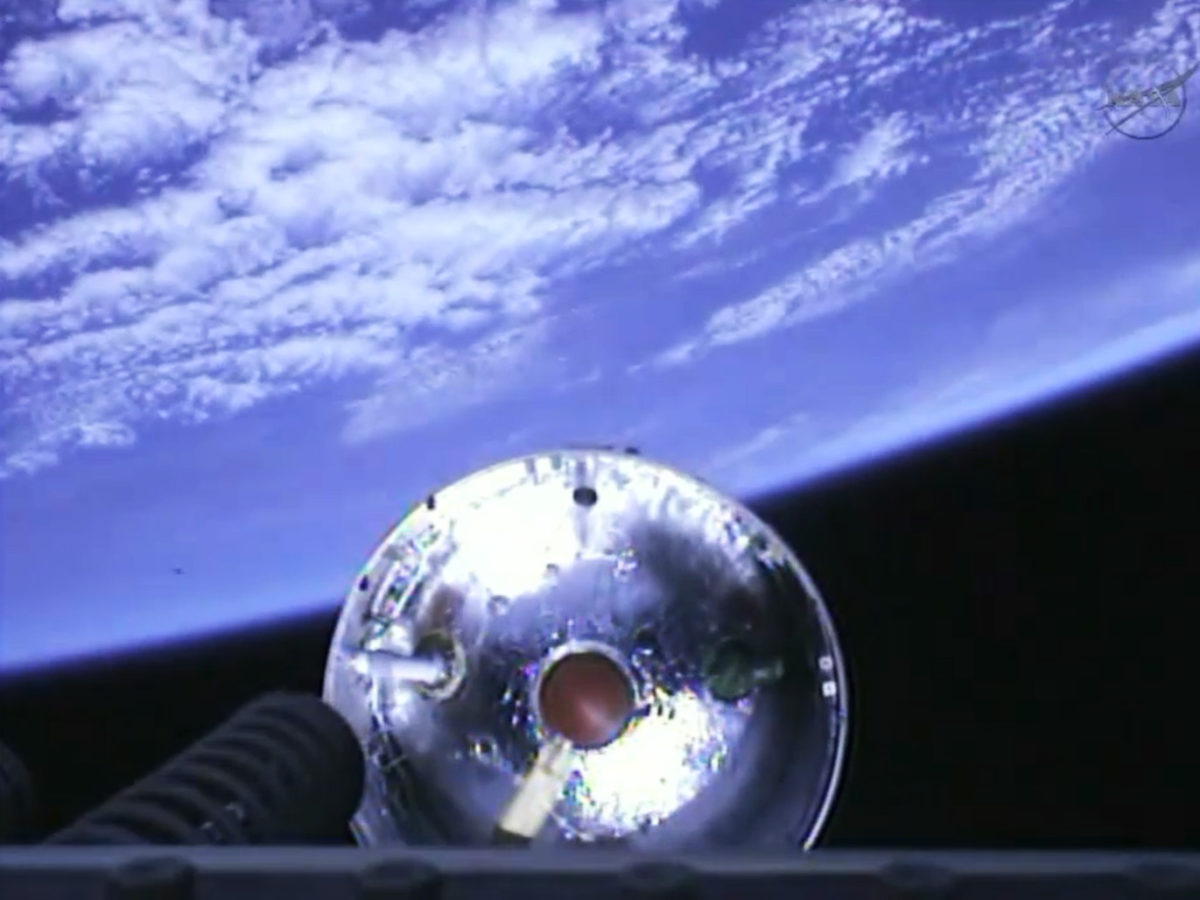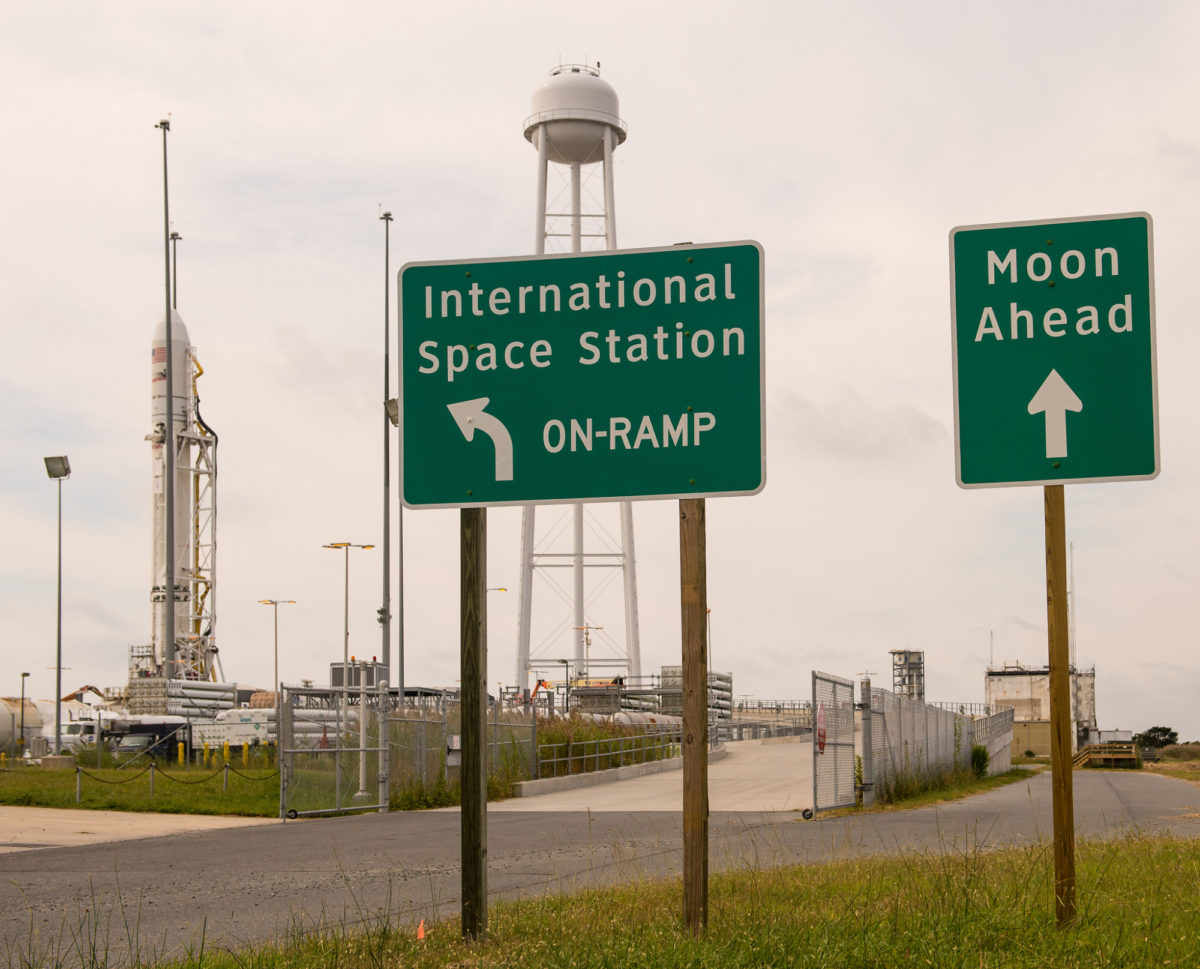Jason Davis • Sep 18, 2013
Antares and Cygnus blast off to International Space Station
Orbital Sciences Corporation’s Antares rocket soared into partly cloudy Virginia skies this morning, carrying the first operational Cygnus resupply spacecraft into orbit. Liftoff from NASA’s Wallops Flight Facility occurred at 10:58 a.m. (14:58 UTC), with Cygnus separating about ten minutes later. NASA and Orbital reported that the spacecraft’s propulsion system had initialized and its solar arrays had been deployed at 11:24.
Liftoff of Antares Orbital Sciences Corporation's Antares rocket blasts off from Pad-0A at the Mid-Atlantic Regional Spaceport on Wallops Island, Va. Perched atop Antares is the Cygnus resupply spacecraft, which is carrying 1,300 pounds (589 kilograms) of cargo to the International Space Station.Video: NASA TV
Cygnus will spend the next few days raising its orbit and conducting demonstration tasks, which include tests of its GPS and ability to free drift and abort. It is expected to arrive at the International Space Station on Sunday, with capture scheduled for 7:17 a.m. Orbital will be the second private company to visit the ISS under NASA's Commercial Orbital Transportation Services program, following three successful trips by SpaceX's Dragon capsule.
To see the full timeline of Sunday's capture and berthing events, check out my launch preview article.



Let’s Go Beyond The Horizon
Every success in space exploration is the result of the community of space enthusiasts, like you, who believe it is important. You can help usher in the next great era of space exploration with your gift today.
Donate Today

 Explore Worlds
Explore Worlds Find Life
Find Life Defend Earth
Defend Earth

